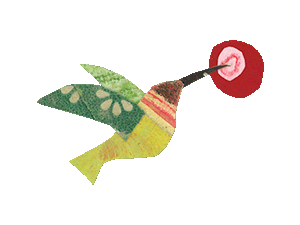Stories to Help Make Sense of Back to School & Covid
Many parents are looking long and hard at the upcoming school year. Whether your child will be in class, remote learning, or homeschool, many of us feel a little disappointed in the options.
Stories at home can help brighten your family’s outlook. It’s often easier to see a difficult situation through the eyes of a character in a story – even for the person telling it.
When we sympathize with a character in a story, we get a chance to practice the situation in ourselves. Marco Iacaboni, a neuroscientist at UCLA who studies mirror neurons, puts it this way, “We have empathy for fictional characters…because we literally experience the same feelings ourselves.”
Yet with a story, we remain at a safe distance. We have a chance to see a character’s choice, then reflect on how we might choose something different.
Whatever your prospects for the year, try to keep a positive attitude. Use storytelling to bring perspective to your child (and yourself) by exploring what it might look like.
And if your child will be at home, check out Joseph Sarosy’s new article in Fatherly about setting up a stimulating learning environment.
Wishing You a Great Year!
Silke & Joe
Practice Story - Back to School Bear
This story is designed to help you and your child make sense of the coming school year.
Begin by taking your child's school situation as your anchor, the real situation that prompts your story.
Back to School Bear has essentially the same situation. Except, not only is he unhappy about school this year, he feels confused because his parents aren't sure about it either. Poor little bear.
Begin your story by describing Back to School Bear's life. What does he look like, what does he do? What’s Mother Bear like? How is she feeling about the upcoming year?
Suddenly, they get a strange visitor - Buzz the Magic Bee. He says they have been granted a wish by the Queen! Mother and child are gifted a sip of the magic honey brew, giving them three lives to live in the next year. The first life is filled with sadness and difficulty. The second is filled with joy and perfections. The third is a little of both. Describe them. Fill out their lives with detail, as if you were watching them, one by one, move across the movie screen in your mind.
The story could be told in one sitting, or each life could be told over a few days. What sticks with you? What does your child notice?
In the end, see if you or your child have gained any perspective on the real situation you face in the coming year. Can Back to School Bear visit here and there to see how you're doing?
Each practice we offer is based on a method we call The Storytelling Loop. Don't worry about the details. You can always change the story. The important thing is to learn the method – start with reality, tell a story, then end up with a new reality.


